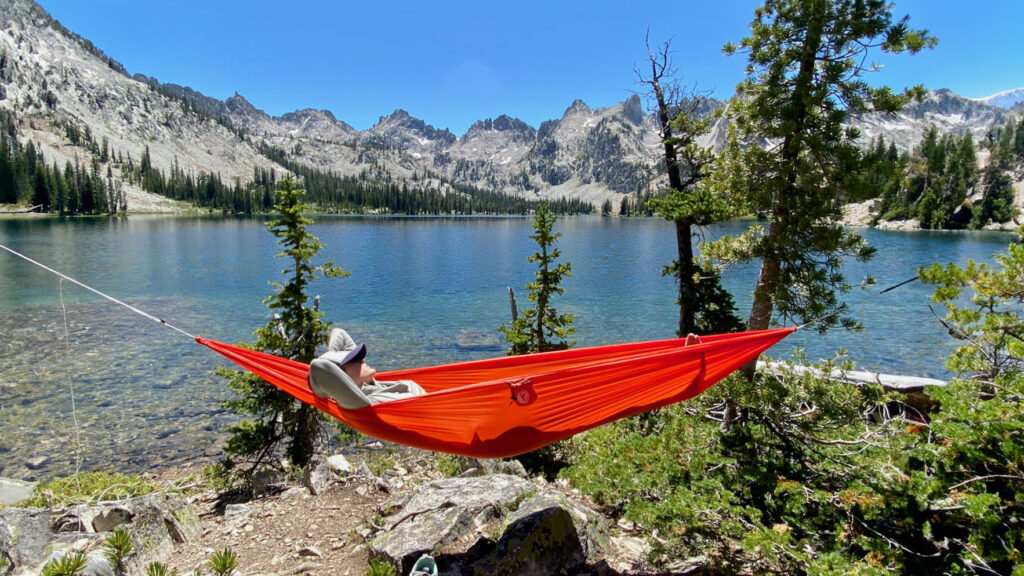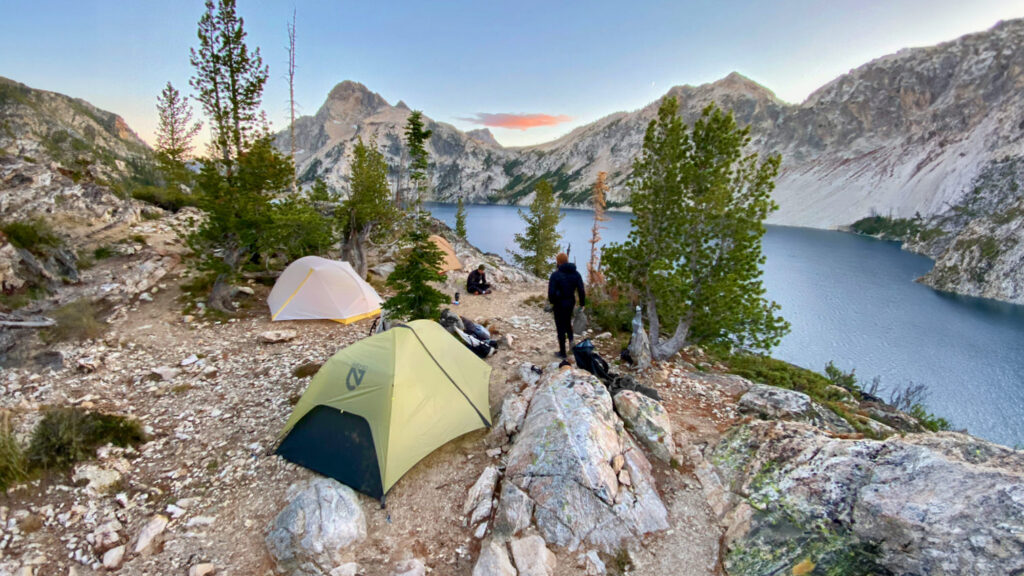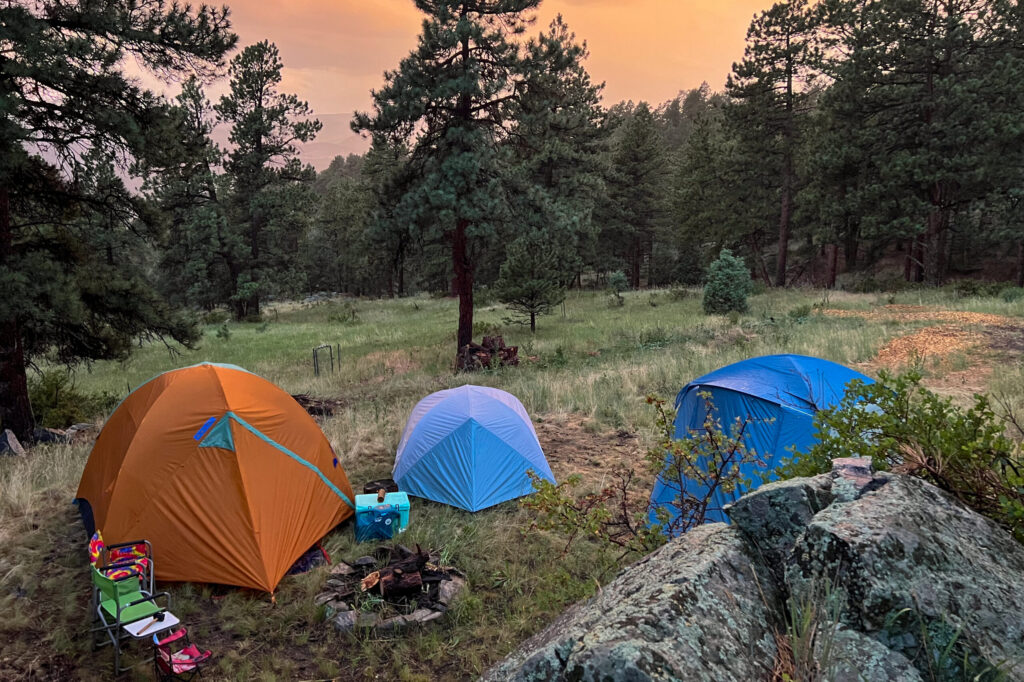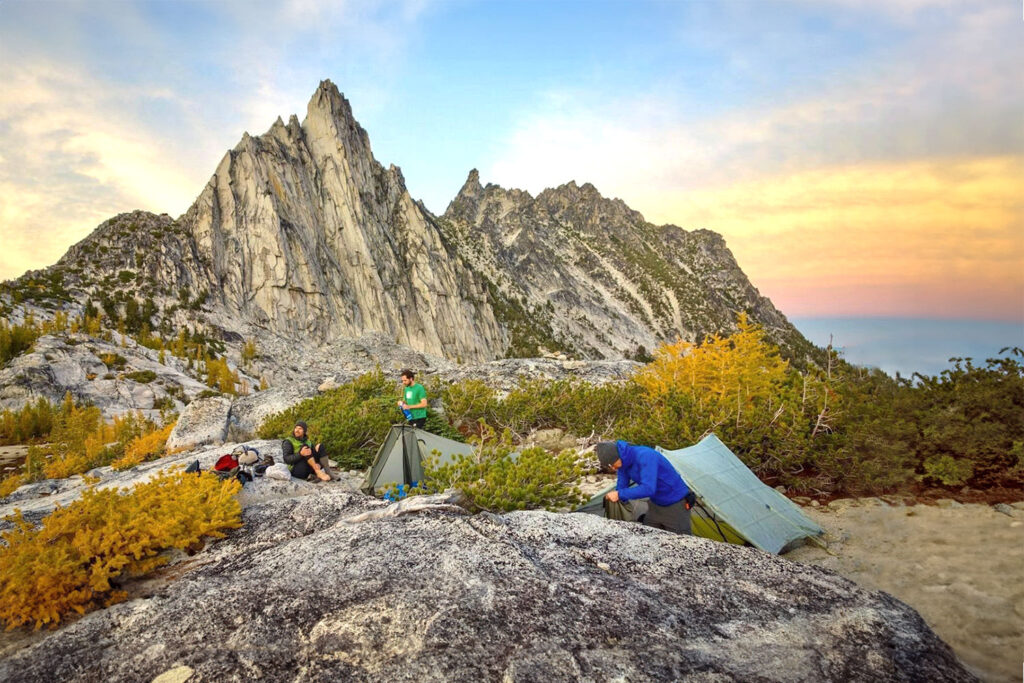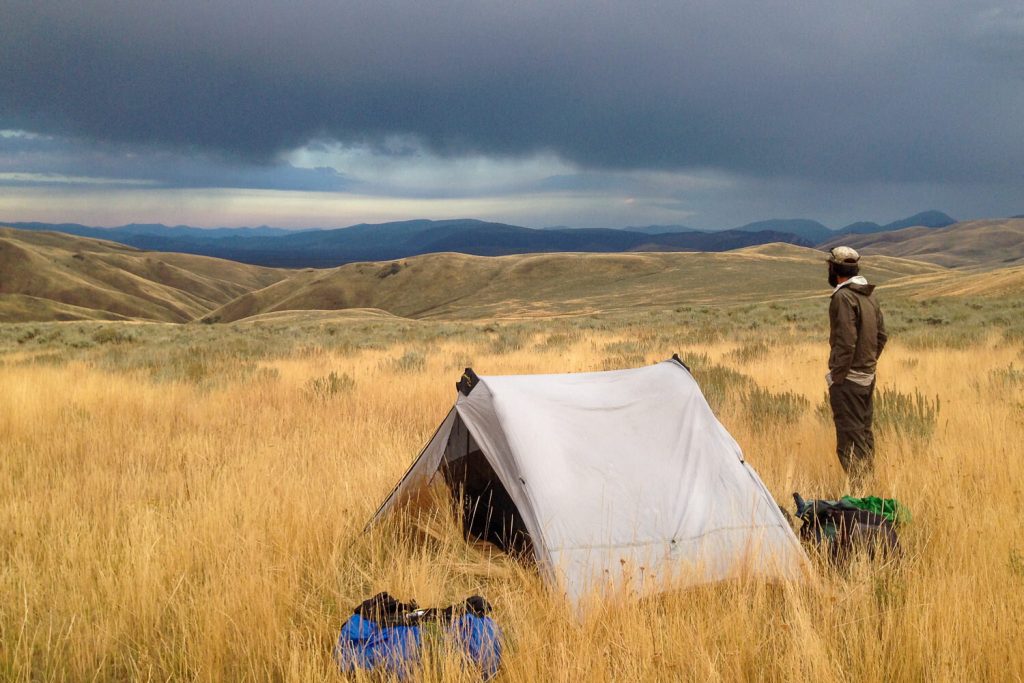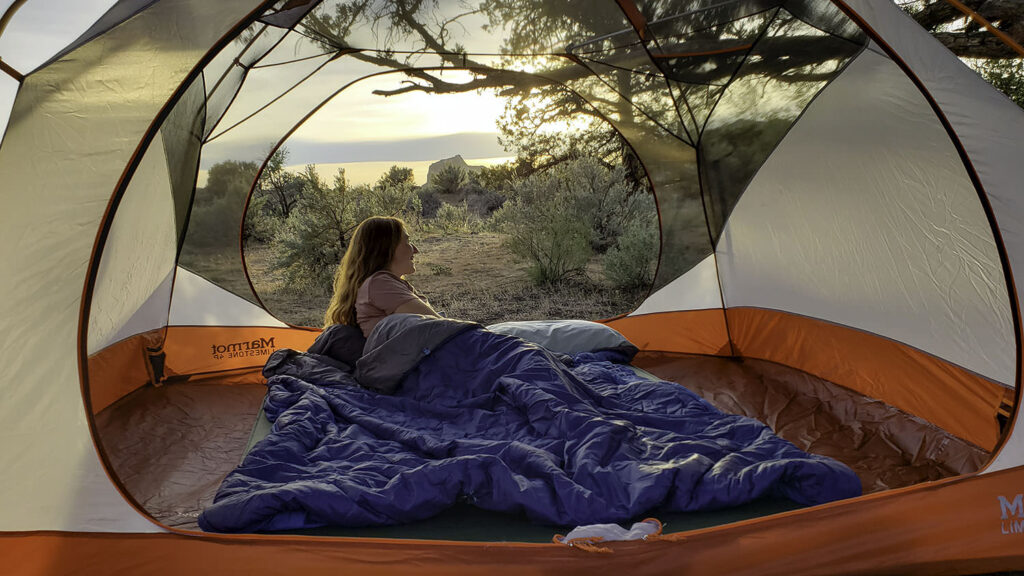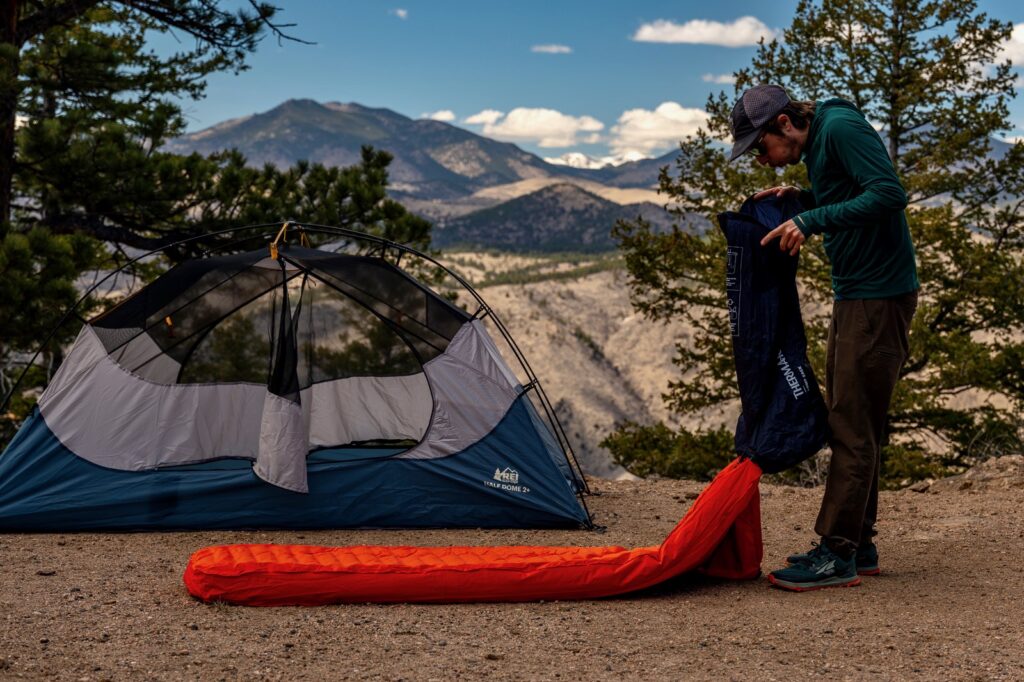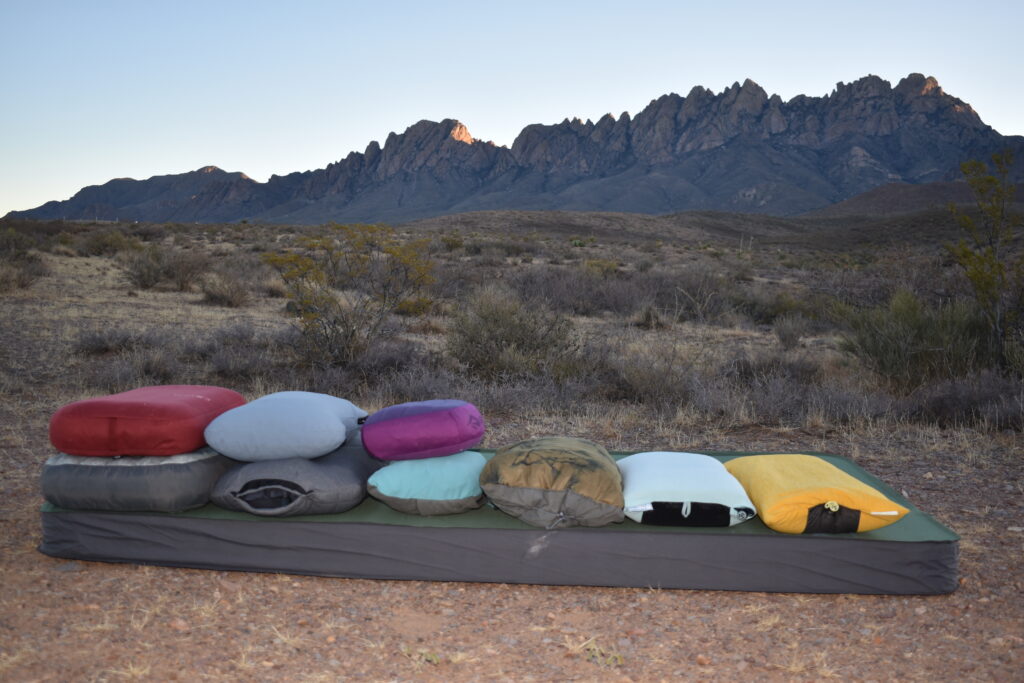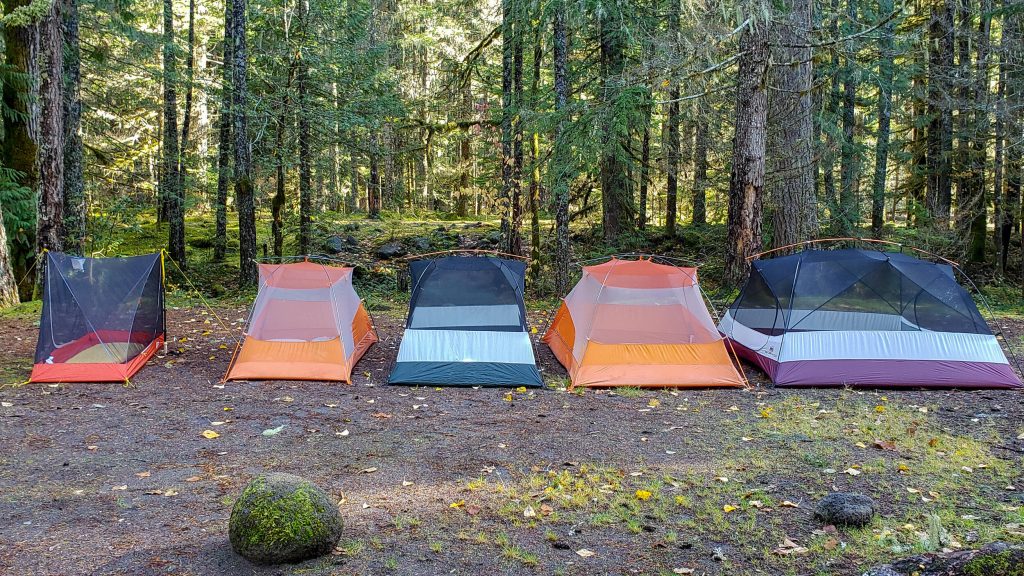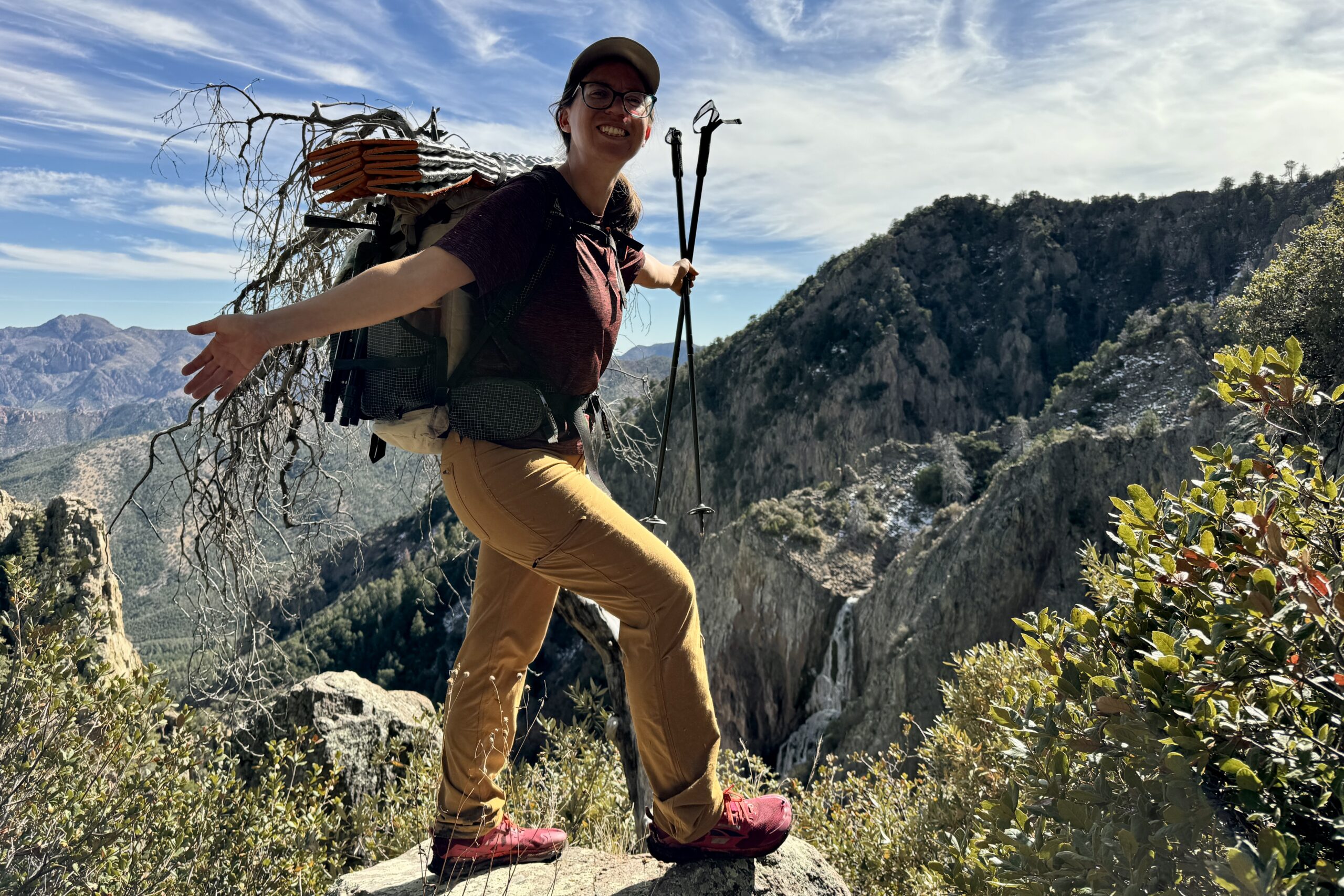
Bottom Line
The Durston Icelines are one of our favorite trekking poles thanks to its innovative design, featherlight weight, and ease of use. These poles are unlike anything else we have ever tried, featuring a unique hybrid design that combines the benefits of folding and telescoping models. This design also makes them extremely fast and easy to set up. As one of the lightest poles we have tested, they make an excellent choice for backpackers who are focused on minimizing pack weight.
While they are more durable than expected, they are still made of carbon fiber. They will inherently be more prone to snapping due to this material, which is something to bear in mind. Their design is also streamlined and minimalistic to help reduce weight. They do not have as many features as some of the other poles we tested.
Overall, we recommend these poles for gear junkies and ultralight backpackers. Still, those wanting something more versatile may want to explore other recommendations in our guide to the best trekking poles.
Quick Specs
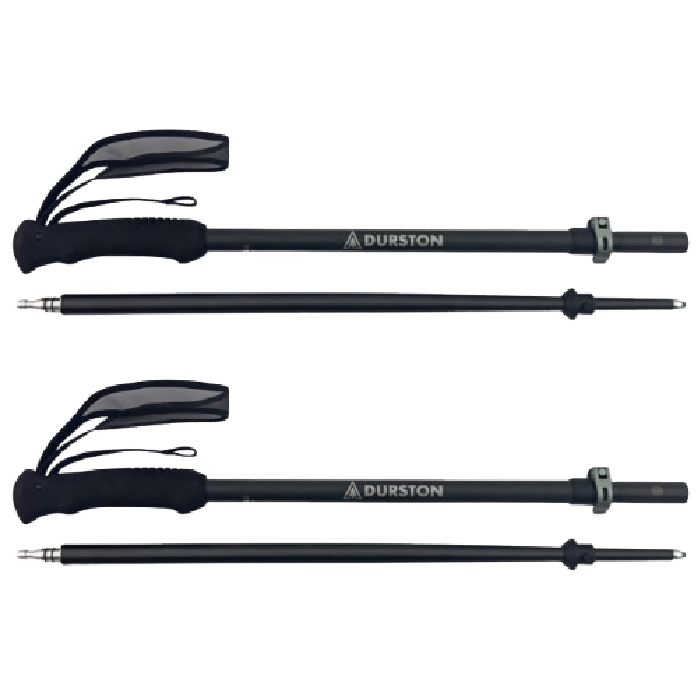
Durston Iceline Trekking Poles
Most Innovative Design
CleverHiker Rating: 4.7/5.0
Price: $170
Weight (Pair): 9.5 oz.(without straps)
Shaft Material: Carbon Fiber
Grip Material: Foam
Collapsed Length: 19.5 in.
Pros
- Ultralight
- Innovative design
- Durable for the weight
- Easy to set up
Cons
- Minimal features
- Wrist straps aren't as comfortable as others
Durability
The Durston trekking poles perform well when you factor in their featherlight weight score and materials. During our side-by-side testing, we dropped these poles on a boulder and threw them like a javelin. The poles work normally after the tests, with minimal cosmetic damage. We also put these poles through a stress test. This involved planting them on the ground and leaning on them to see their strength.
The Iceline poles did better than we expected; there was less bending than some, and they did not feel as frail as the other ultralight, carbon fiber poles in our lineup. We used these trekking poles while backpacking in the Chiricahua Mountains of Arizona. They helped us get through the snow on our way up to Chiricahua Peak. On the way down, they helped bash through the brush back down to the valley. Overall, we appreciate that these poles offer a terrific balance of durability and weight.
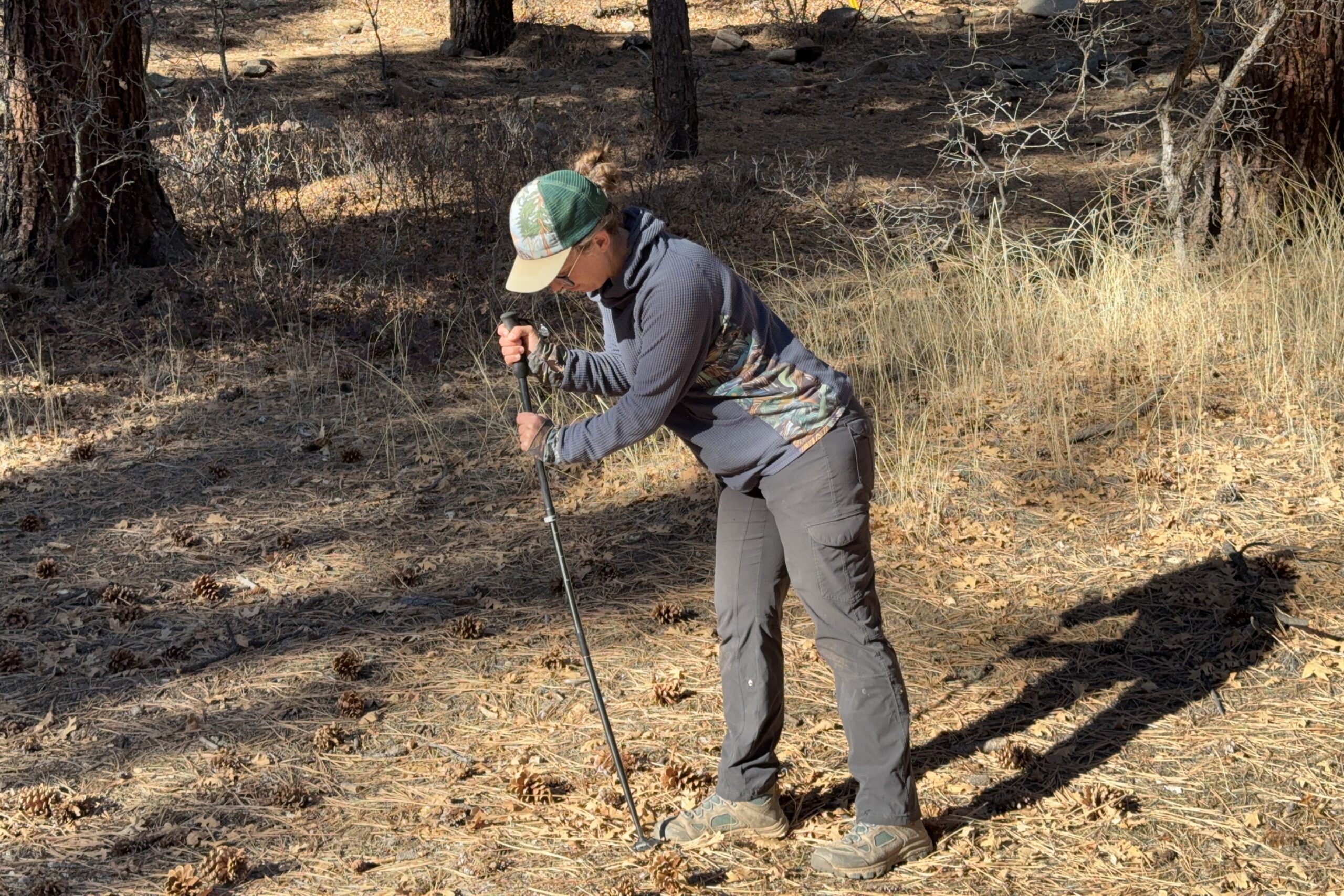
Weight
The Iceline trekking poles are one of the lightest we tested, making them an excellent option for those trying to shave every ounce they bring into the backcountry. We weighed these poles on our kitchen scale and a single Iceline pole weighed 5.5 ounces with both the wrist strap and basket. This is very close to our top performer and shows this model is a tremendous ultralight choice.
While backpacking in the Chiricahua Mountains, we chose to bring this pole with us specifically for its uber ultralight weight. This was a huge pro when carrying it on our pack and hiking through the snow to Chiricahua Peak. It almost didn’t feel like we were even using poles while walking with them. Overall, the Iceline poles are a stellar option when weight is a priority.
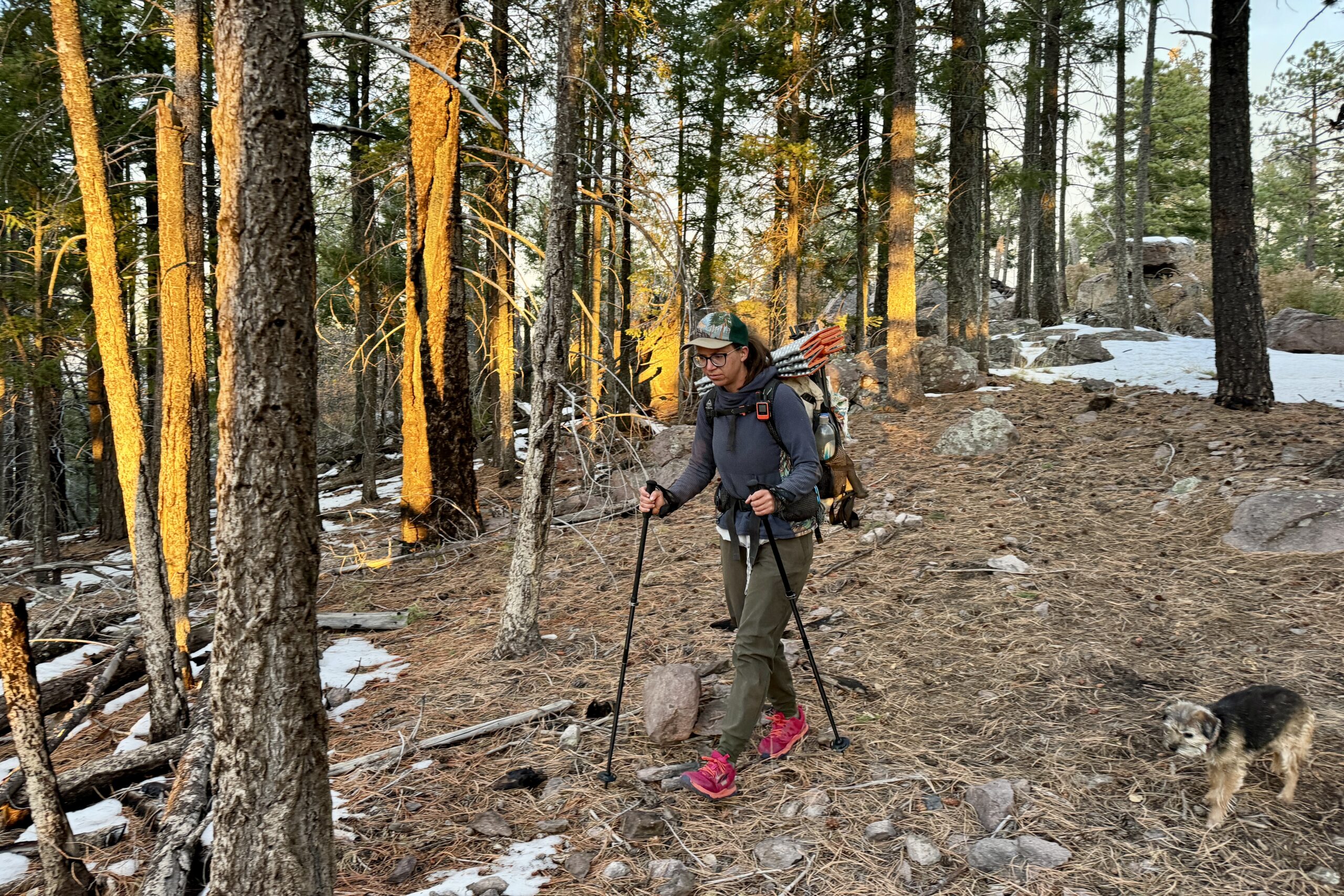
Comfort
As an ultralight style pole, the Iceline trekking poles have minimal comfort features. Notably, while the shape and diameter of the trekking poles feel fine, they do not have cork or padded wrist straps. Compared to other models we tested, this puts them below average in comfort.
Still, the foam handles are comfortable enough to use as they have a bit of give. However, they are not ideal for long-term use. Compared to cork, foam handles do not absorb shock from the ground as well. Sweat is another issue: it sits on the handles and causes the hand to get dirty. The wrist straps are thin and have a net-like pattern. While these will still get the job done, they do not feel as nice on the skin as a softer material.
In the field, the shape and diameter of the grips meant they were still comfortable enough to use for a full day of hiking. There are just some better options on the market for comfort.

Ease of Use
The unique, hybrid folding and telescoping design makes these poles easy to set up. The lower pole section easily clicks into the upper portion with a ball and socket-style joint. A small mechanism holds the tip of the lower pole in place, and a button on the side releases it.
One of the main reasons we wanted to test these trekking poles was their unique design, which is unlike anything else we have seen. There is also a flick lock tensioner to telescope the middle and upper portions of the trekking pole. This allows the length of the pole to be adjusted. It is very fast to pop the lower section into the slot and adjust the flick lock portion. The pole slides easily, and the tensioner is easy to use. There are even measurement markings to make it easier to adjust the length of the pole.
This is our favorite design because of its uniqueness and efficiency.
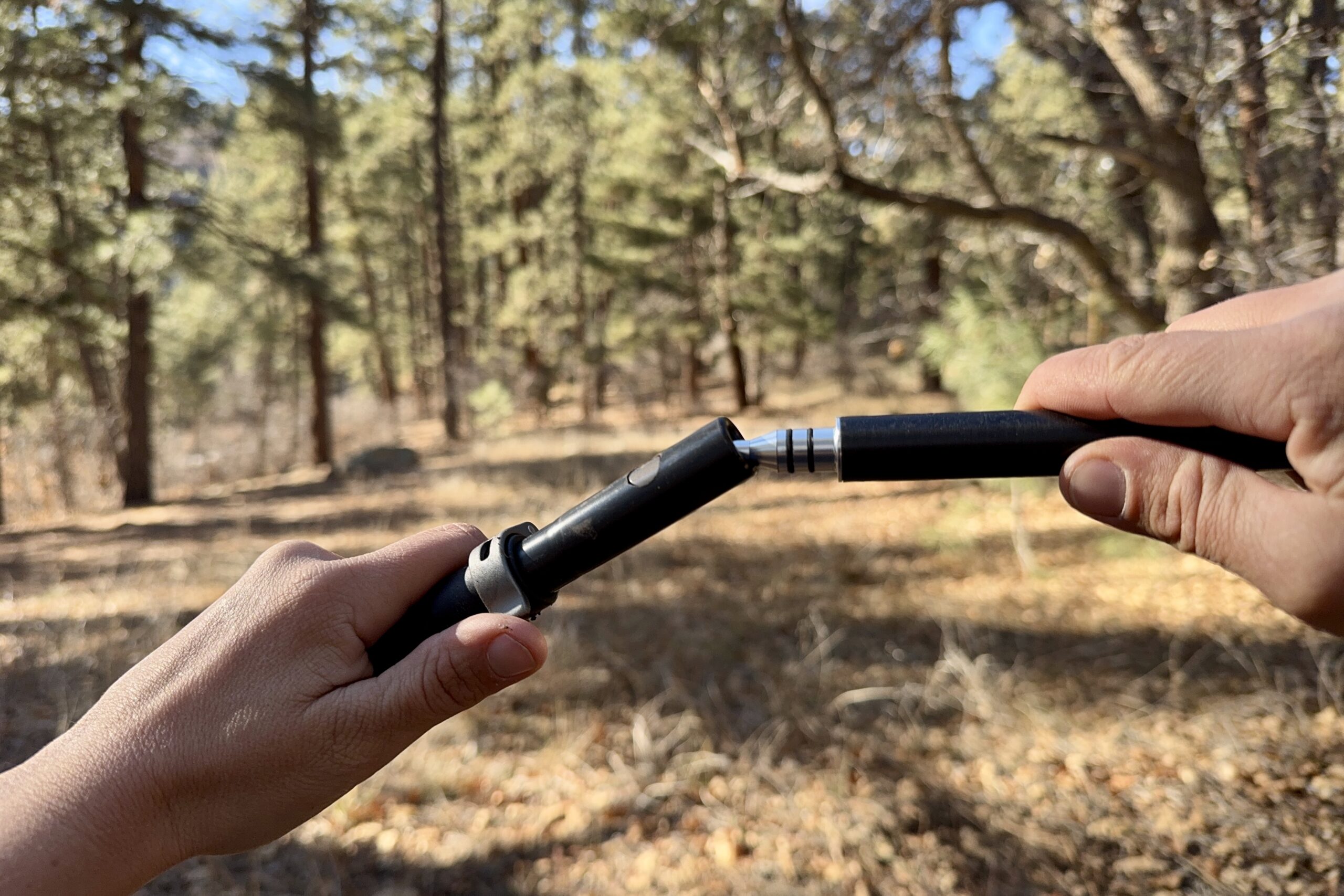
Packability
Packability is an area where the Durston trekking poles perform above average. Generally, folding-style trekking poles are more packable, and telescoping models do not pack down as small. Therefore, it seems fitting that the Iceline poles, a hybrid of the two, fall between them.
When we measured their length, they came in at 19.25 inches. It is distinctly longer than the folding poles and definitely shorter than any of the telescoping models.
One thing to remember about these poles is that there isn’t anything holding them together. The upper and lower pole shafts are entirely separate when collapsed. This means that there is the potential to lose part of the pole when they are stowed away.
To address this problem, we used the Dyneema storage bag that came with the poles while backpacking in the Chiricahua Mountains. This ensured that no pole segments would get lost, especially while bushwhacking. The bag is lightweight and surprisingly durable. It’s still a bit frustrating to have to deal with it, though.

Features
Features are another area where the Iceline trekking poles go with the bare minimum. We tallied how many valuable features each trekking pole model has and used that to help rank them. We looked at whether or not they had wrist straps, how many baskets came with them, and whether the carbide tips could be replaced.
The Durston poles come with both wrist straps and one set of baskets. As mentioned in the comfort section, the wrist straps are basic and not the best to use for long periods.
The baskets are an interesting case. Rather than coming with summer baskets, winter baskets, or both, the Iceline trekking poles come with baskets that are a hybrid of the two. They are larger than summer baskets but smaller than being dedicated for just winter. We also found them to be challenging to put on. It took us several minutes to wrestle them onto the pole. Fortunately, they also come with replaceable carbide tips, but that’s about it for features.
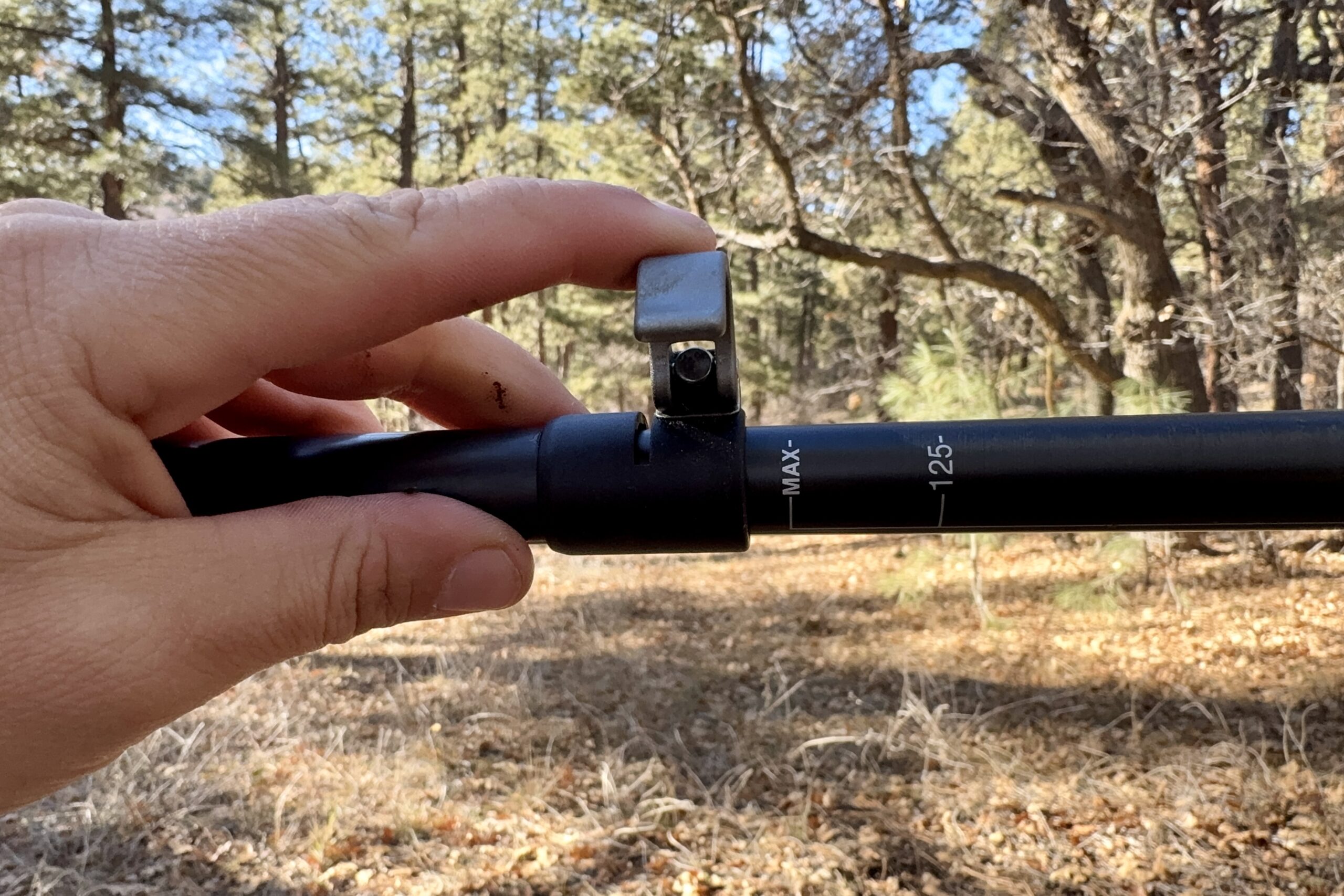
Should You Buy The Durston Iceline Trekking Poles?
We love the Durston Iceline trekking poles, but they are better for some situations than others. These poles are intended for ultralight backpacking and are some of the lightest on the market.
While they were much more durable than we were expecting, they are still made of lightweight carbon fiber. This means they will be better suited to use on well-maintained trails where the goal is to travel light and fast. While they could theoretically be used for winter activities or rougher conditions, they will not thrive as much in those scenarios. They are expensive, but as long as the poles will be used for lightweight hiking, they should still be worth the price.

What Other Trekking Poles Should You Consider?
We tested several featherlight trekking poles, which you can learn more about below or in our trekking pole gear guide.
Gossamer Gear LT5 Review: A bit lighter than the Iceline trekking poles, the LT5 poles have a few more features, like tip covers, but less durability. We used the LT5 trekking poles on the same trips as the Durston poles, and they performed surprisingly well. Even when we used them on some rough, off-trail sections, they showed no signs of breaking. We aren’t sure we would trust them to catch us from a big fall, but they are a good alternative to the Iceline poles.
Black Diamond Distance Carbon FLZ Review: While these poles are geared more towards trail runners, they still make an excellent choice if weight is a concern. They are not as durable as the Iceline trekking poles, but we love how small they pack down. These poles are an excellent choice if they will be stowed away for much of the day.
Zpacks Minimalist Review: The Minimalist poles are also geared towards ultralight backpacking. Though their durability is not great, they are significantly more affordable than any other UL option. We also appreciate that they are available for purchase as a single pole or a set of two.



